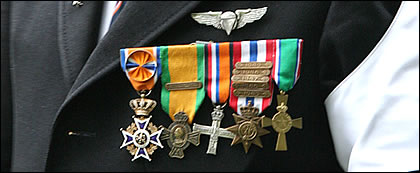
Positive psychology research asks whether experiencing fear is a central component of courage.
Imagine you are in this situation:
“I was sitting in a Tube carriage next to an attractive young woman who was reading a magazine. There was a guy sitting opposite me, who was kind of Neanderthal [and starts hassling the woman sat next to me].
Anyway, all the passengers on the Tube were aware of this. The Tube stops. He gets out of the doors – the thug. He walks off down the platform, we’re all quite happy he’s gone. Another passenger flips him a V-sign. The doors have closed, by the way, when he does this. And then the disaster happens – the doors reopen.
The thug runs back in. He’s six foot three, his muscles are so big they’re flexing against the Tube glass, and he just starts beating seven bells out of this fellow. And actually when you see physical violence or are on the receiving end of it, it’s very very nasty.
His fist went into the side of his head, blood came out, another fist, the guy goes down on the carriage floor, and the thug walks off very happy with himself. And I did nothing. The carriage was pretty full. But none of us did anything. It was terrible.”
This story is from BBC News and happened to one of the reporters. And although it is a relatively extreme example, most of us have seen something comparable in public. And most people would also agree that it would take considerable courage to get involved in a situation like this.
But what if the person getting involved is a police officer, or a person trained in these situations? Does that make them less courageous? What, then, is courage?
Writers and philosophers have long been interested in this question. One of the best, and most succinct, suggestions comes from Ernest Hemingway; that courage is “grace under pressure”.
But being psychologists we need something with a little more science behind it.
What is courage?
To find out what courage is, Rate et al. (2007) asked a group of students at Yale University and the United States Air Force Academy (USAFA). They came up with a long list of items which were then statistically grouped into the following three categories or types of courage:
1. Self-focussed response to affect and external circumstance. This category included: ‘enduring a tough situation’, ‘remaining focussed in a high-stress environment’ and ‘does not give in to fear when making decisions’.
2. Non-physical/social oriented acts. This category included: ‘stands up to unjust social practices because of what one thinks right’, ‘maintains honesty no matter others’ opinions’ and ‘demonstrates integrity’.
3. Selfless sacrifice/risk. This category included items mostly meaning: ‘risks to protect others’.
These results and a further study and statistical tests found more evidence for these categories.
Evaluating courage
So this tells us what people generally think courage is, but what about how they use these definitions to evaluate whether other people are courageous? To find this out, Rate et al. (2007) gave 169 participants a series of 33 short stories. Each of these vignettes were designed to vary along four dimensions that were derived from the previous two studies:
- Noble/good act,
- Intentionality/deliberation,
- Known substantial personal risk,
- Presence of personal fear.
Here’s one so you can get the flavour:
“Mark (Julie) was surfing off the coast of the Florida panhandle when he witnesses a 14-year old girl being attacked by a tiger shark. The young victim was in severe agony as she screamed for help. Although in stunned disbelief and visibly shaken by what he was witnessing, Mark immediately began paddling as hard and as quickly as he could to reach the girl. Mark began to hit, beat, and kick the tiger shark to ward off further attacks. He was able to beat back the 7-foot attacker. He then pulled the girl onto the surfboard and paddled to shore.” (Rate et al. 2007, p. 92)
The reason for the bracketed ‘Julie’ is that a female protagonist was presented to half the participants to see if gender made any difference to perceptions of courage. It didn’t – people had the same standards for both men and women.
What is the role of fear in courage?
Three of the four dimensions on which the vignettes varied predicted courage, but personal fear did not. This means that noble/good act, intentionality/deliberation and substantial personal risk are all important in evaluating courage in another – but personal fear is not.
This is an interesting finding because many views of courage include the idea that it incorporates dealing with personal fear. The authors, however, suggest the failure to find personal fear contributing to evaluations of courage is down to methodological problems.
The debate about whether courage includes fear has a long pedigree, going back to Plato and Aristotle (Rate et al., 2007). Aristotle thought actually feeling fear was integral to courage, whereas Plato argued that it was a rational understanding of fear instead of actually feeling it that was important.
Sample criticism
The sample used here had a good point and a bad point. The good point was that half the group came from USAFA, a mostly male, conservative/traditional group and the other half came from Yale, a female biased, liberal group. Despite this contrast there were no differences in the way courage was viewed.
The bad point was that both are elite institutions not representative of the whole population so future research needs to examine a more stratified sample.
Read more on positive psychology: 3 Reasons Life is Worth Living From Positive Psychology.
References
Rate, C. R., Clarke, J. A., Lindsay, D. R., Sternberg, R. J. (2007). Implicit theories of courage. The Journal of Positive Psychology, 2(2), 80-98.

